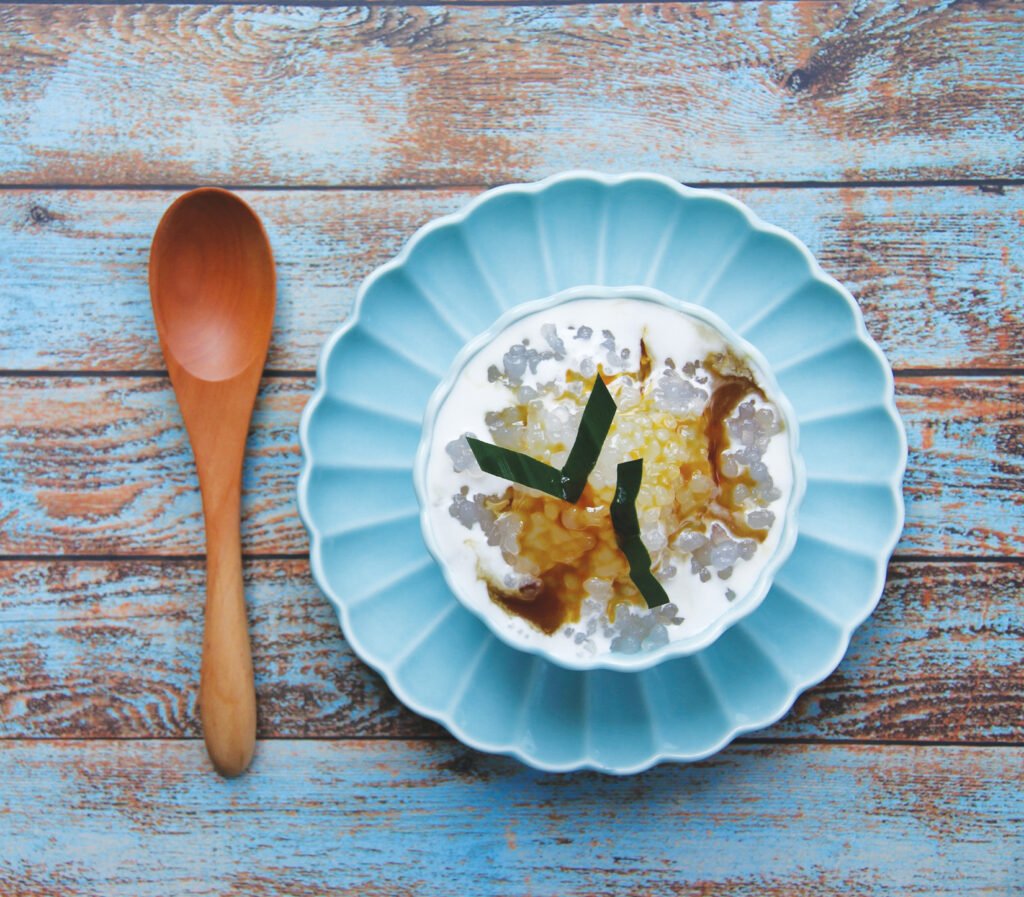 In Singapore we are fortunate to have opportunities to eat at Peranakan restaurants, or at homes of Peranakan friends. Peranakans (Baba is the term for males, Nyonya for females) are originally of Chinese fathers and Malay mothers, with subsequent generations marrying within their own community or into the Chinese community. Nyonyas excel in the art of cooking, incorporating Chinese ingredients with Malay spices, resulting in a rich heritage cuisine.
In Singapore we are fortunate to have opportunities to eat at Peranakan restaurants, or at homes of Peranakan friends. Peranakans (Baba is the term for males, Nyonya for females) are originally of Chinese fathers and Malay mothers, with subsequent generations marrying within their own community or into the Chinese community. Nyonyas excel in the art of cooking, incorporating Chinese ingredients with Malay spices, resulting in a rich heritage cuisine.
TABLE SETTINGS
Peranakan etiquette places emphasis on genteel behaviour, including at the table. A circular table is preferred, where everyone is seated equally. Previously, food was eaten using fingers of the right hand, but it is customary nowadays to use tableware comprising a dinner plate with a fork to the left, spoon to the right, and soup bowl at the top right. Drinks are placed to the top right of settings. Antique Nyonya-ware, usually family heirlooms, seen on tables for special occasions, is colourful and elegant, and makes a great conversation point.
SERVING FOOD
The staple food is boiled rice, accompanied by meat stews, poultry, fish and vegetables, prepared in bite-size pieces. Soups are rich without being heavy. Sweet desserts are almost mandatory. Fresh lime juice and barley-water are popular, as well as coffee. Well known items include babi pong teh (stewed pork); assam prawns (prawns in spicy tamarind sauce); sayur lodeh (spicy vegetable dish); chicken macaroni soup and mee siam (fried vermicelli with spicy gravy), legendary cakes (kueh) made with rice flour and coconut milk; and gula Melaka (cold sago pudding with palm sugar syrup and coconut milk).

DINING ETIQUETTE
Nyonya food is shared amongst diners, whether at home or in a restaurant. Serving dishes of food are placed in the centre of the table, for diners to help themselves. These generally remain on the table, although they may be moved closer, for transferring food to individual plates using serving spoons. Food is consumed from the spoon, with the fork aiding food onto the spoon. Soup is generally consumed throughout a meal, and not necessarily as a separate course.
A condiment called sambal blachan is always served with meals, prepared with chillies, dried shrimp paste and lime juice. Be warned, it is very spicy! This condiment is generally provided in individual bowls. Should it be in a communal bowl, a serving spoon will be used to place some sambal blachan on the dinner plate. Another popular side dish is achar (pickles), utilising the same style of etiquette.
When otak-otak (minced fish meat mixed with a spicy paste, placed in coconut leaves and grilled) is served, the leaves should be opened up fully, using fingers, before commencing eating the otak-otak from the leaves, using a fork and spoon. Upon finishing, the leaves are left on the plate or the table, depending on the setting.
It is good manners to finish eating all the rice on your dinner plate. Upon finishing a meal at a Peranakan table, the fork and spoon are placed side by side in the centre of the dinner plate, with the handles towards the diner, fork tines facing upwards and the bowl of the spoon also facing upwards.
Enjoy!
Excerpts from Chinese Etiquette-A Matter of Course by Raelene Tan, published by Landmark Books.
Photographs courtesy of Pan Pacific Singapore








